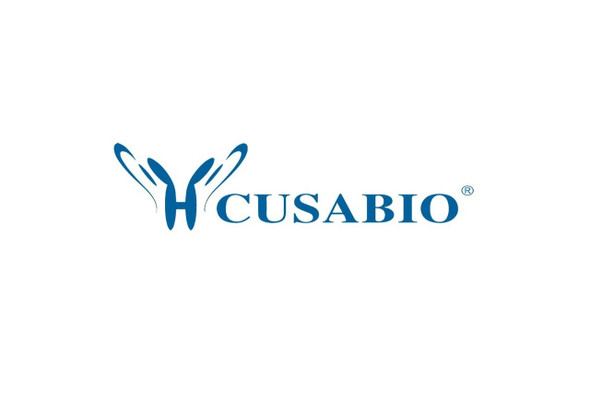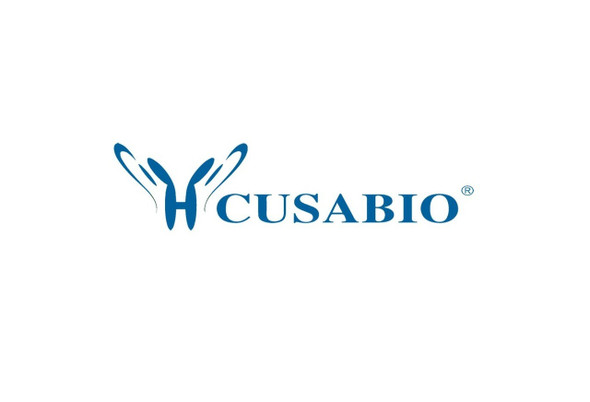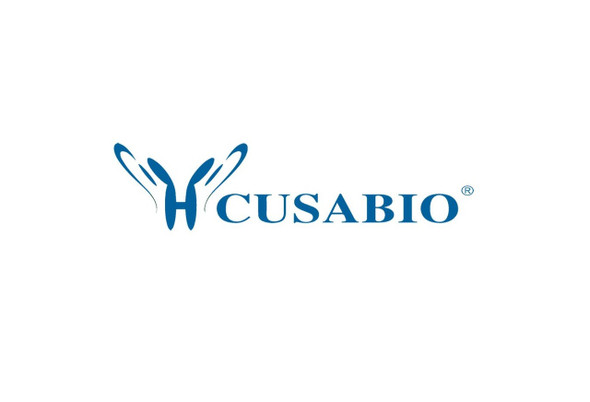Cusabio Human Recombinants
Recombinant Human Uncharacterized protein C8orf4 (C8orf4) | CSB-EP882079HU
- SKU:
- CSB-EP882079HU
- Availability:
- 13 - 23 Working Days
Description
Recombinant Human Uncharacterized protein C8orf4 (C8orf4) | CSB-EP882079HU | Cusabio
Alternative Name(s): Thyroid cancer protein 1
Gene Names: C8orf4
Research Areas: Signal Transduction
Organism: Homo sapiens (Human)
AA Sequence: MKAKRSHQAVIMSTSLRVSPSIHGYHFDTASRKKAVGNIFENTDQESLERLFRNSGDKKAEERAKIIFAIDQDVEEKTRALMALKKRTKDKLFQFLKLRKYSIKVH
Source: E.coli
Tag Info: N-terminal GST-tagged
Expression Region: 1-106aa
Sequence Info: Full Length
MW: 39.3 kDa
Purity: Greater than 90% as determined by SDS-PAGE.
Relevance: Seems to be involved in the regulation of cell growth an differentiation, may play different and opposite roles depending on the tissue or cell type. May enhance the WNT-CTNNB1 pathway by relieving antagonistic activity of CBY1. Enhances the proliferation of follicular dendritic cells. Plays a role in the mitogen-activated MAPK2/3 signaling pathway, positively regulates G1-to-S-phase transition of the cell cycle. In endothelial cells, enhances key inflammatory mediators and inflammatory response through the modulation of NF-kappaB transcriptional regulatory activity. Involved in the regulation of heat shock response, seems to play a positive feedback with HSF1 to modulate heat-shock downstream gene expression. Plays a role in the regulation of hematopoiesis even if the mechanisms are unknown. In cancers such as thyroid or lung cancer, it has been described as promoter of cell proliferation, G1-to-S-phase transition and inhibitor of apoptosis. However, it negatively regulates self-renewal of liver cancer cells via suppresion of NOTCH2 signaling.
Reference: "Cloning of TC-1 (C8orf4), a novel gene found to be overexpressed in thyroid cancer." Chua E.L., Young L., Wu W.M., Turtle J.R., Dong Q. Genomics 69:342-347(2000)
Storage: The shelf life is related to many factors, storage state, buffer ingredients, storage temperature and the stability of the protein itself. Generally, the shelf life of liquid form is 6 months at -20?/-80?. The shelf life of lyophilized form is 12 months at -20?/-80?.
Notes: Repeated freezing and thawing is not recommended. Store working aliquots at 4? for up to one week.
Function: Seems to be involved in the regulation of cell growth an differentiation, may play different and opposite roles depending on the tissue or cell type. May enhance the WNT-CTNNB1 pathway by relieving antagonistic activity of CBY1
Involvement in disease:
Subcellular Location: Cytoplasm, Nucleus, nucleolus, Nucleus speckle, Nucleus
Protein Families:
Tissue Specificity: Ubiquitous. Expressed in thyroid papillary carcinoma. Expressed in liver, expression levels decrease in hepatocellular carcinoma (PubMed:25985737). Slightly detected in normal lung, its expression is highly induced in lung cancer cells (at protein level) (PubMed:24941347).
Paythway:
Form: Liquid or Lyophilized powder
Buffer: If the delivery form is liquid, the default storage buffer is Tris/PBS-based buffer, 5%-50% glycerol. If the delivery form is lyophilized powder, the buffer before lyophilization is Tris/PBS-based buffer, 6% Trehalose, pH 8.0.
Reconstitution: We recommend that this vial be briefly centrifuged prior to opening to bring the contents to the bottom. Please reconstitute protein in deionized sterile water to a concentration of 0.1-1.0 mg/mL.We recommend to add 5-50% of glycerol (final concentration) and aliquot for long-term storage at -20?/-80?. Our default final concentration of glycerol is 50%. Customers could use it as reference.
Uniprot ID: Q9NR00
HGNC Database Link: HGNC
UniGene Database Link: UniGene
KEGG Database Link: KEGG
STRING Database Link: STRING
OMIM Database Link: OMIM










